Photography for the comic style is more than just a simple click of the shutter. It requires precision in pose, lighting, and overall composition to create a character that appears both lively and expressive. In this guide, I will walk you through the essential steps you can follow to create impressive comic-style images. I will also address the key aspects of planning and execution.
Key Insights
- Choose models with a positive aura.
- Pay attention to body posture and limb mobility.
- Keep the lighting setup simple and focus on the main light source.
- Ensure clothing is solid-colored and well-ironed.
- Practice the interplay between pose and facial expression.
Step-by-Step Guide
1. Choosing the Model
The search for a suitable model begins with the character you want to capture for your comic style. Look for people who are naturally humorous and cheerful. Such individuals project their positive energy onto the image and make your job easier. A model who smiles has a natural advantage over those who are more reserved.
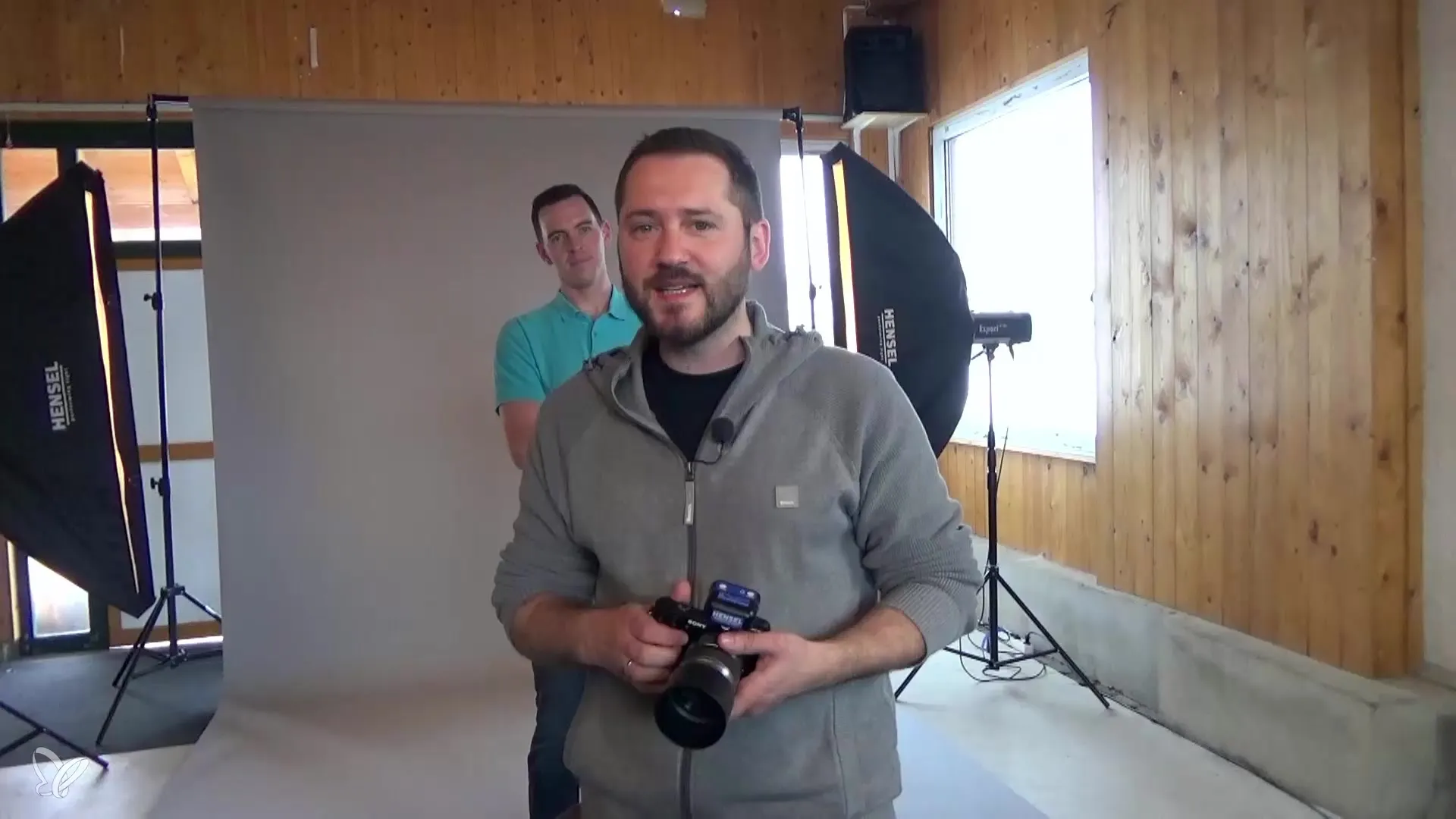
2. Setting Up the Background and Lights
A clean and simple background is crucial. Use a neutral, light background to draw focus to your model. When setting up the lights, experiment with different light sources. In this setup, I work with two strip lights that highlight the contours of the model for appealing lighting, and a large octabox that provides even illumination from the front.
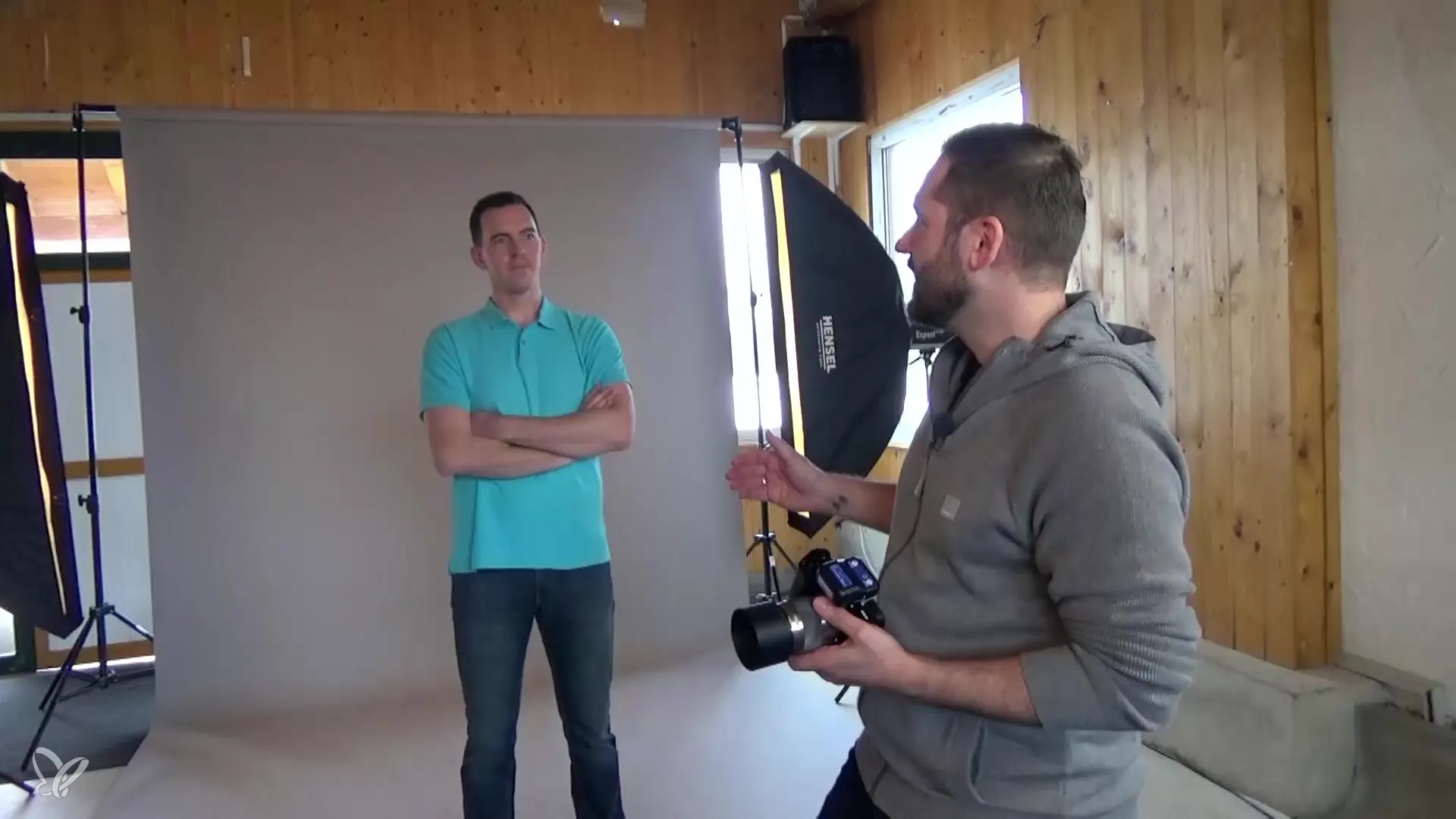
3. The Right Body Posture
The pose of a model plays a decisive role in your composition. Ask your model to keep their arms slightly apart and to relax their posture. This adds more dynamism and later gives you the freedom to work with the existing body lines in post-production. Models often need some practice to feel comfortable in this pose. Here, your trust in their expressiveness can be crucial.
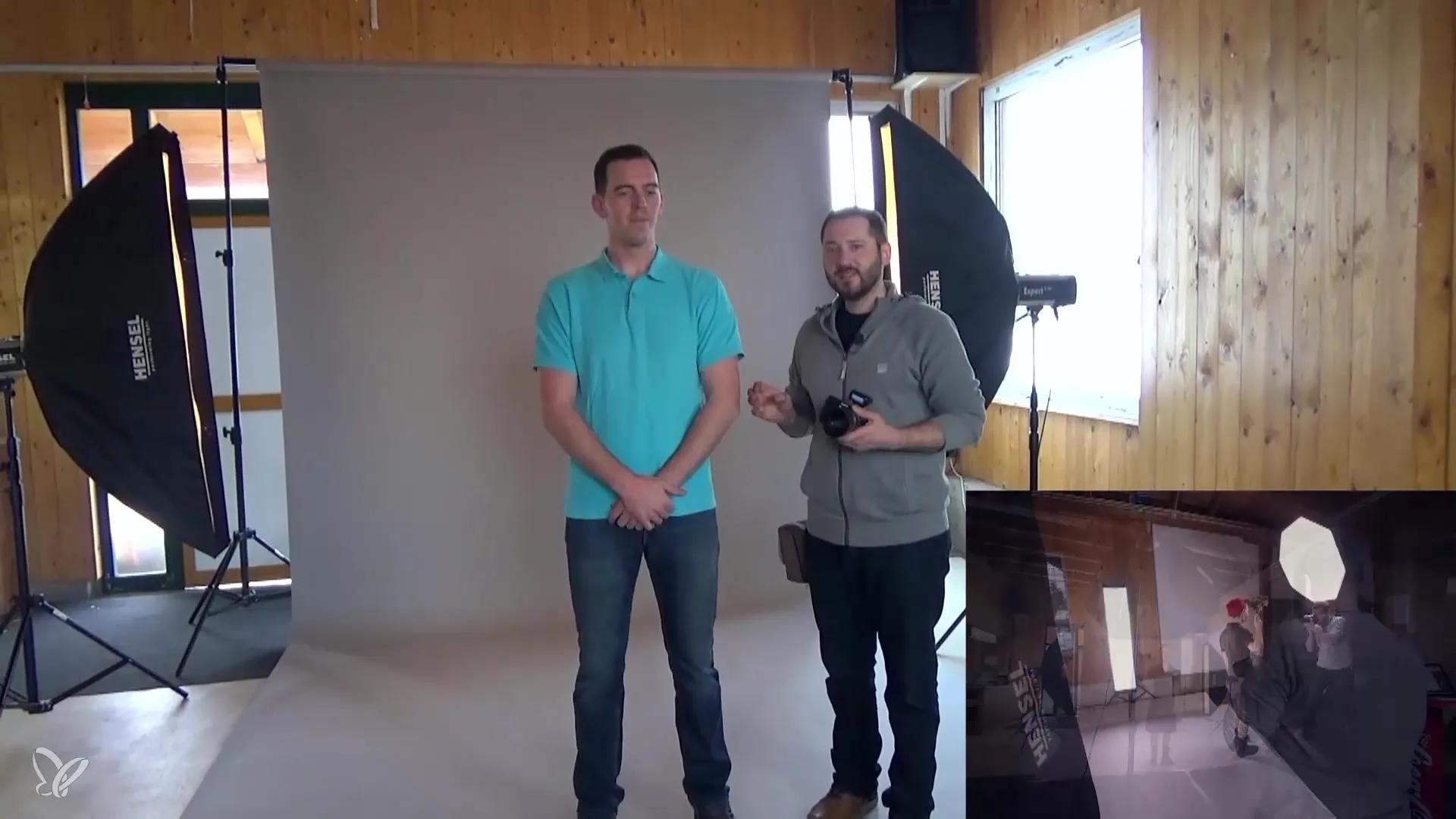
4. Interaction and Facial Expression
Ensure that your model's eyes and mouth are engaged. The more your model laughs and opens their eyes, the less you will need to intervene in post-production. Train your model to intensify their facial expressions—from happy laughter to expressive eyes. The interplay of the eyes and mouth creates the desired comic effect that you want to achieve.
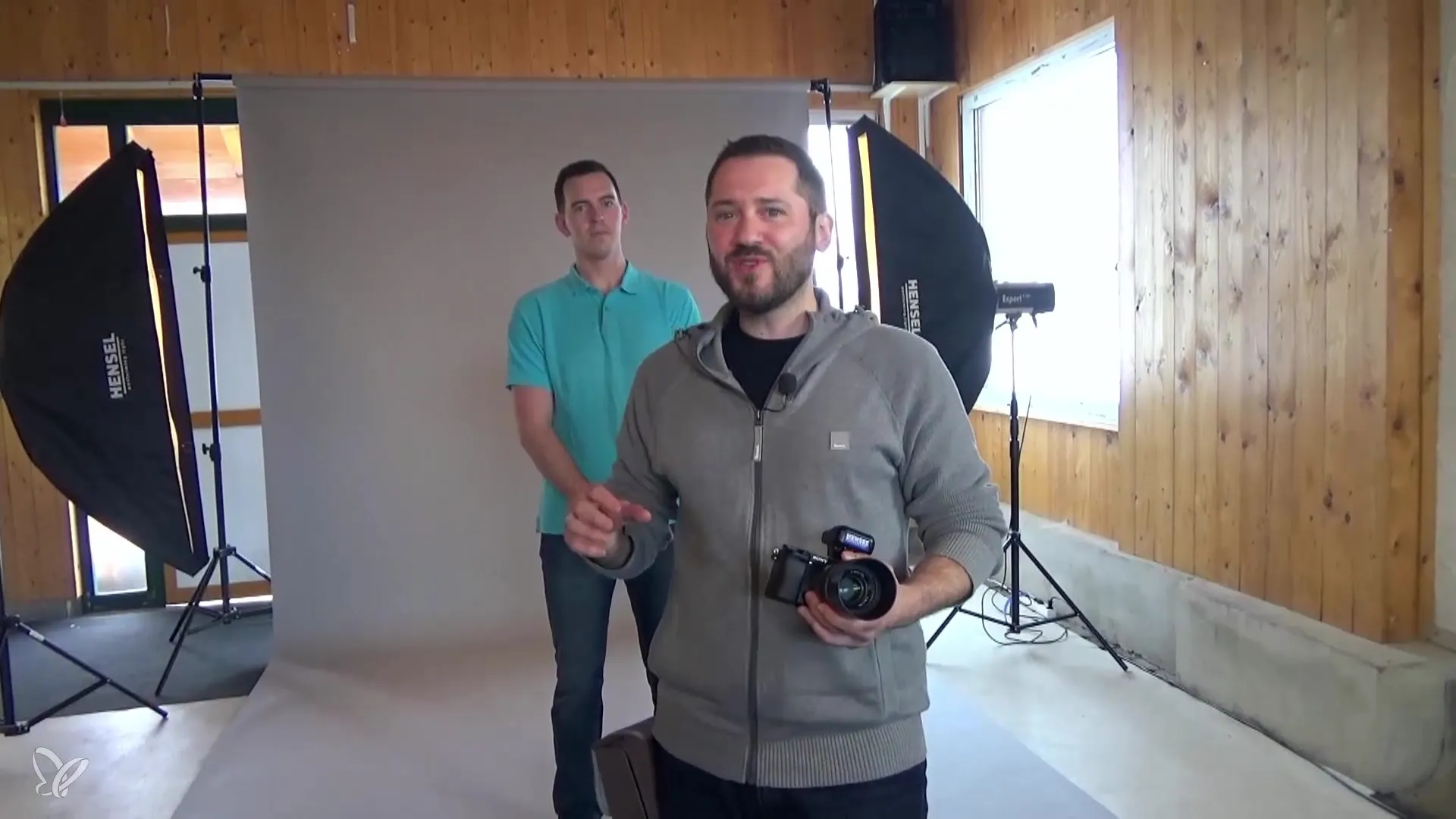
5. Clothing Choice
The choice of clothing should not be underestimated. For the comic style, it is important that your model wears solid-colored and well-fitting clothing. Patterns can become problematic during editing. The best option is to have clothing that is solid-colored and simple, allowing you to adjust the colors in post-production. An ironed shirt is also important to avoid unsightly wrinkles.
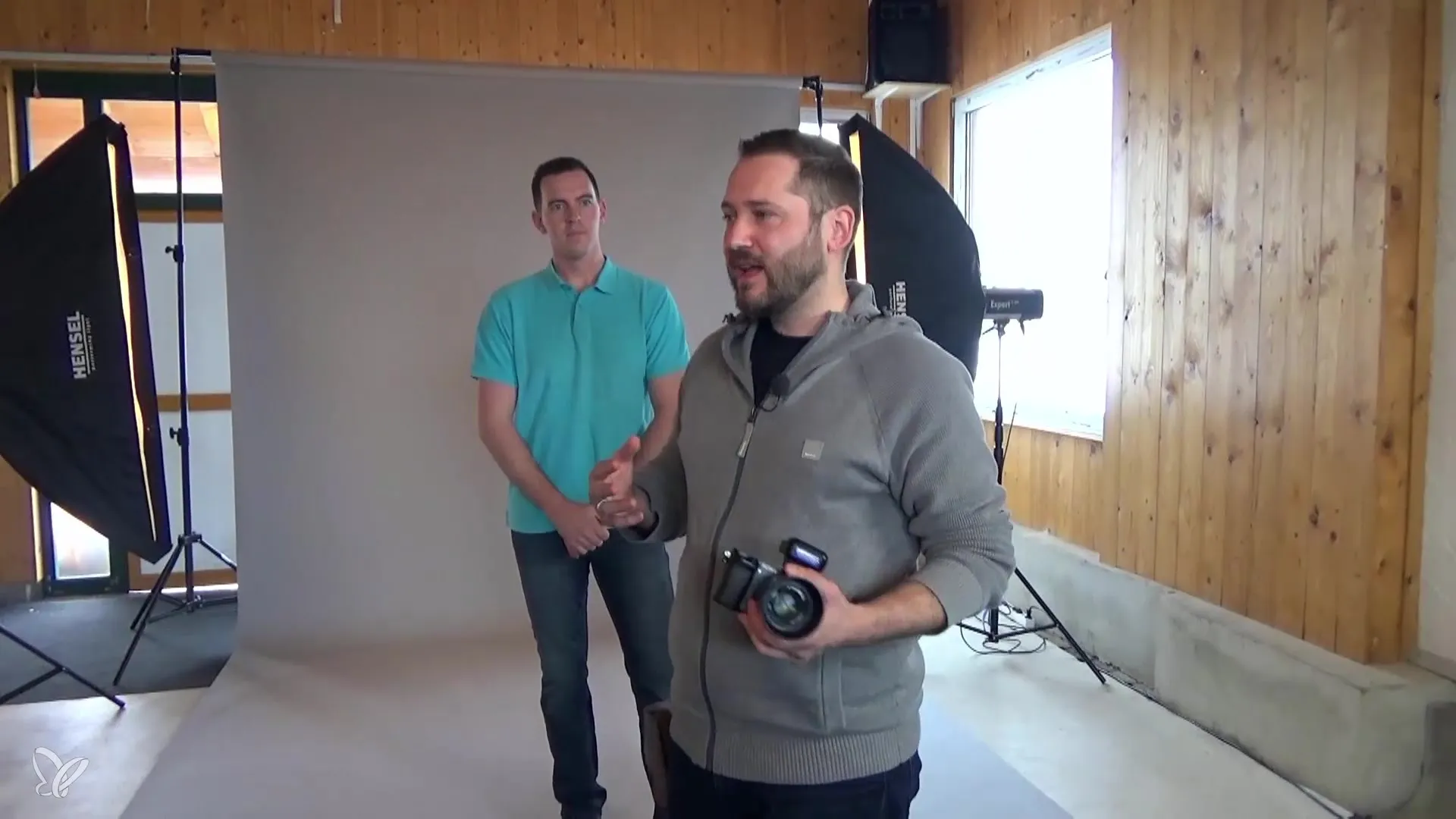
6. Workflow During the Photoshoot
Once everything is set up, begin to ease your model into the perfect pose. Be sure to capture the pose first before working on the facial expression. This method reduces the number of unusable images and ensures you work with the best shots. Once the pose is achieved as desired, you can refine the expression.
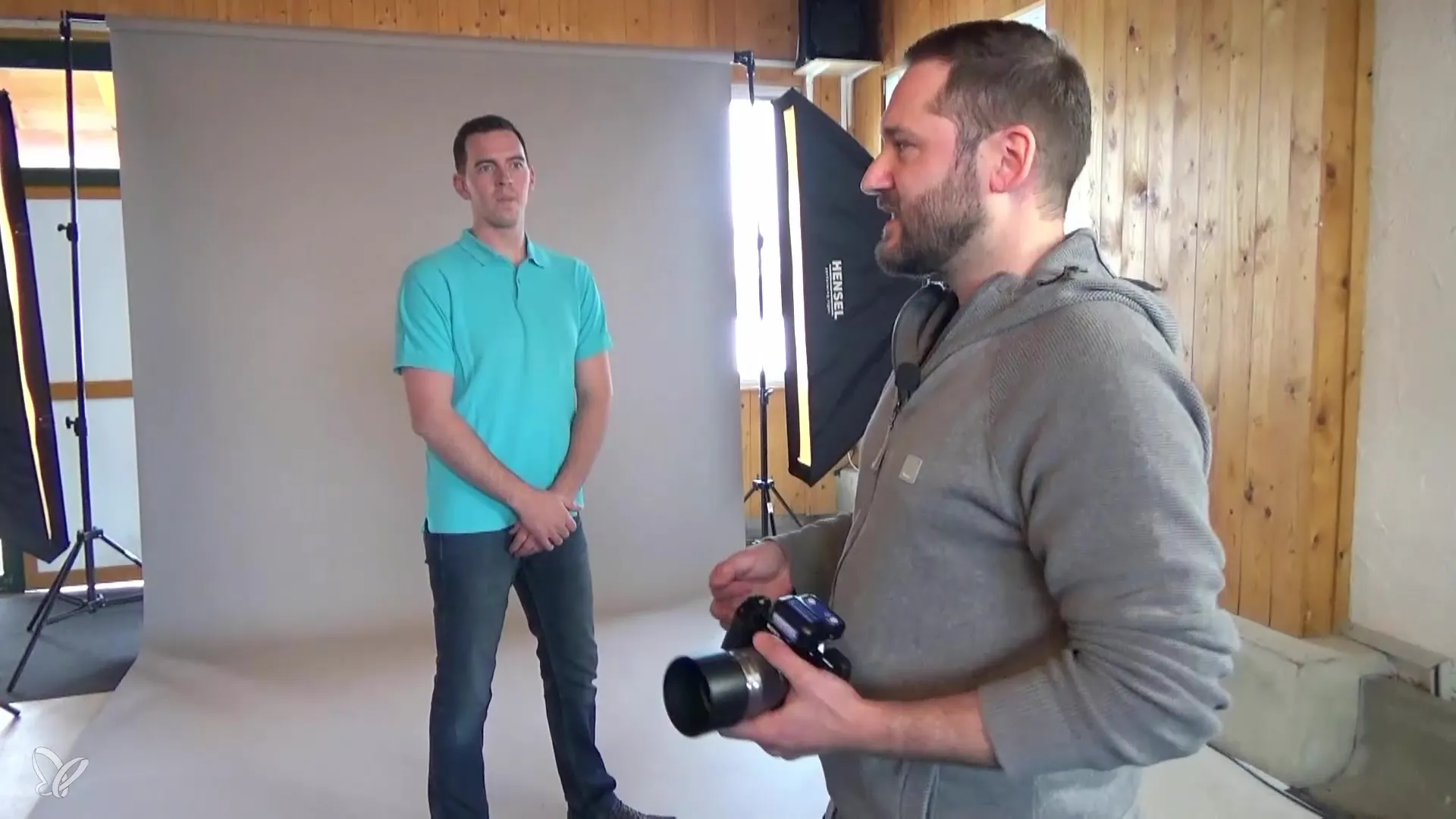
Summary – Comic Style: The Perfect Workflow for Dynamic Portraits
To photograph in a comic style, you need careful planning and execution. Choose your model wisely, pay attention to a positive aura, and ensure a relaxed body posture. Use simple light sources and opt for solid-colored, well-fitting clothing. By following these steps, you will be able to create dynamic and vibrant comic-style images that bring your creative ideas to life.
Frequently Asked Questions
What is the advantage of a positive aura in a model?A model with a positive aura can express emotions and dynamic facial expressions better, which is essential for the comic style.
How important is lighting in photography?The shape and condition of the light have a direct impact on the image's effect. Ensure that it lights the model well.
Why are solid-colored garments better suited?Solid-colored clothing allows for easier post-production and prevents distractions from patterns.
How can I best interact with my model?Ensure a relaxed atmosphere, explain the poses and emotions you want. Build trust so that the model feels comfortable.
How often should I adjust the model during the shoot?It is helpful to make regular adjustments throughout the session to capture the perfect pose and expression.

